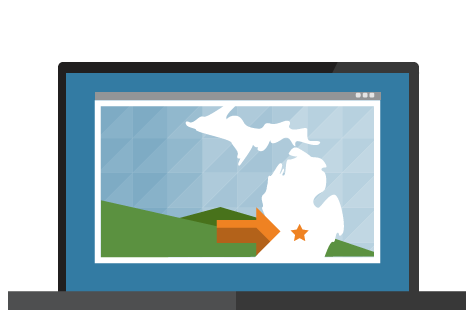The 5 Elements that Make Accounting Websites Convert Leads

It’s a given that your website is the new “main street” for prospects finding out about your firm or practice. Which is why it is crucial to create a website that is built to convert visitors into prospects….instead of being a pretty wallflower that sucks money out of your pocket each month.
With that in mind, let’s review the critical elements that make up an ROI driven website
Element 1: Search Engine Optimization
Search Engine Optimization (aka SEO) is how easily search engines can find your website.
There are two buckets SEO falls under: On page (everything on the website) and Off page (other websites/links that point towards yours). Since off page is a lot more controversial, we’ll stay with a focus on “on page” SEO. Here are the elements you need keep in mind:
1. Title Tag: The title tag is the “main” title for your website. You can find yours by hovering over your open tab, or you can view anyone’s title tag by doing a search (see below)
2. Keywords: Much like your title tag, each page should have a focused keyword. I recommend just one keyword per page. So, for example, I’d have a page for “Pittsburgh Accountant”, another one for “Pittsburgh Payroll”, and another one for “Pittsburgh Tax Planning”, and so one. Each title tag would have the phrase, and the actually content on the page would have the keyword inside (typically 3-5 times, no need to overdo it by jamming the keyword 100 times on a page. Google will actually penalize pages that are overtly trying to game their algorithm.)
3. Speed: Google loves fast websites… therefore, it’s critical to keep your site up to speed. Here’s a great site to check your website speed: http://tools.pingdom.com/fpt/
4. Local Search: We mentioned this as a “marketing must have” in a previous post, so I won’t dive into too much detail. But essentially, you need to get your business set up on Google places ASAP. It takes a few minutes, and dramatically increases your rankings for Google. I recommend doing the same for Yahoo/Bing Places, Yelp, and even your local chamber page.
5. New content: Web engines also favor sites that continue to create content… after all they’re in the business of indexing content! The search engine should index the site while it is being maintained, and with new content, be sure to share it on social media channels (if for nothing else than to help your SEO. “Social shares” or “signals”, as they call it, is a growing factor in search rankings.)
Element 2: Headline
As soon as someone lands on your website, this is the first thing they see… the headline.
You might not even “have” a headline, which means they skim the site quickly and then bounce.
Your website, and the internet, works similar to someone skimming a newspaper or magazine. They look for headlines that tell them if the content is relatable to them. If not, on to the next article (or in this case… website!)
This is why a headline is critically important. We covered messaging earlier in the course, so if you skipped it, now is the time to review. You want a clear headline that tells the benefit of doing business with you, and the type of client you serve. The more specific, the better.
Element 3: Testimonials
Nothing builds trust faster than third party endorsement, and when you think about it… it makes complete sense. Prospects expect for you to say great things about your firm…but testimonials are more trustworthy because you’re not saying them!
Think back to last time someone recommended something to you… how much weight did it carry?
Compare that to a company or practice that touts themselves as the “best” hardly lands on the ears on the prospects.
Be sure to place testimonials on every single page. Ask your clients for them, and don’t be shy! If you do great work, they’ll be happy to send over a few lines about how much they appreciate working with you.
Element 4: A Reason to Act
This part is critical to turning a money sucking website into an ROI-driven website. This is called a “reason to act”. Other circles will call this a “call to action”. Essentially, this is the exact instruction, clearly labeled, of what you want the visitor to do next. For example, at the bottom of this post is a “call to action” to join our VIP email list. This helps us increase our email sign ups, and gives us the opportunity to build a relationship with our visitors. A “call to action” can come in a few forms, and here are the most common:
- Contact form
- Email opt-in (email list, white paper, case study, etc)
- A specific page you want new visitors to go to
Element 5: Above the fold action
The “above the fold” refers to everything you see on a website, as soon as you land on the homepage, without scrolling down. The majority of your visitors will never scroll down below this section, so it’s critical to catch their attention and provide something valuable to them!
For example, on the how main homepage, our above the fold has a single call to action “Click Here to Start a Free Trial” (see below). On your website, it might be “Learn More About Our Services”, “Request a Free Review of Your Books”, or “Download 5 Financial Mistakes Small Biz Owners Make” ebook.
Summary:
So if you find yourself “lost” in all the marketing noise and how to setup your website, remember these five elements:
1. Optimize for SEO
2. Create your attention grabbing headline
3. Add testimonials
4. Create a “reason to act”
5. Remember to focus on “above the fold”
Enjoy the post? Feel Free to Share with a Colleague





